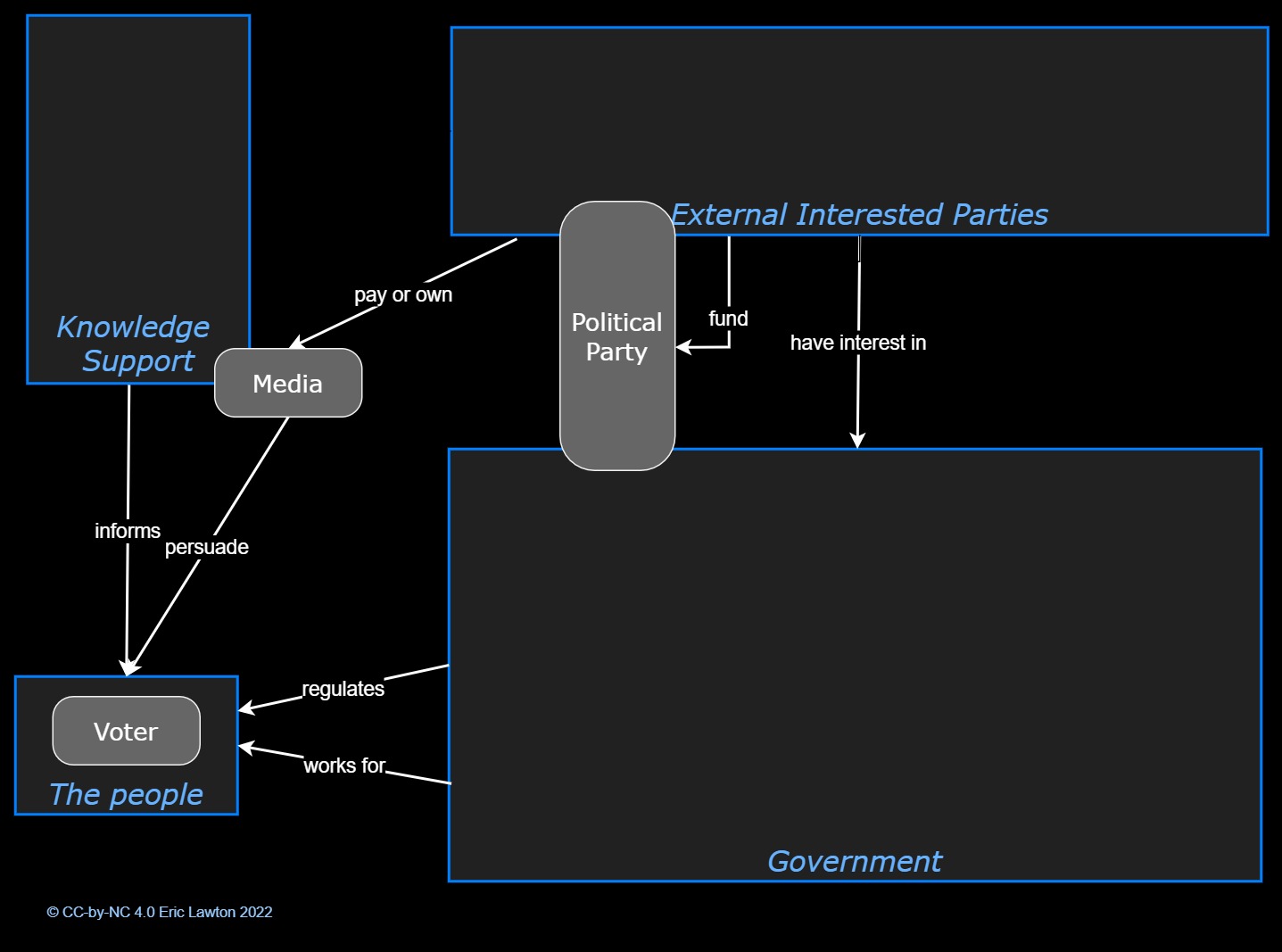First Workshops on Democracy
Representative Democracy as a System
System Context ― the view from outside
As I argued in the previous workshop, democracy should not be assessed merely on the basis of a government.
However, in this and the following workshops, I will look at the systems supporting democracy in government.
For a country’s government to be considered a democracy at all, it must have some democratic institutions such as an elected government (however suspect those elections might be).
In this workshop, I have attempted to apply the system context diagram tool from Introduction to Tools, Social Systems Context. This should provide the overall context for the detailed discussions in the following workshops.
My first attempt at a diagram of the context for those institutions was rather complicated, so I simplified it, for the purposes of this introductory workshop, to what I considered to be the major elements. As usual, the content of the diagram is fully described in the text below.

Figure 1: Democracy system context ― outline
Government itself is shown as a system and the three main interested parties are shown on the diagram with their interactions. These are:
- The people of the country, the general public, which includes the voters. The government both governs the people and in a democracy, supposedly works for the people.
- Public knowledge centres, which inform the public by developing, holding and disseminating public knowledge; these include universities, schools and libraries.
- Independent influencers, which affect democracy by using influence beyond those available to voters, such as corporations and wealthy people.
I have also shown two other parties: the media and political parties, which overlap with the main four. The media are partly public knowledge centres and political parties are both an integral part of government and also external influencers.
At their best, and in theory, the media provide accurate and relatively deep knowledge to support the democratic process. However, they act also as open advocates for the wishes of their paymasters, both their owners and their advertisers and they will put the interests of these paymasters before those of the public so cannot be relied on to be serve the public interest. This includes the entire publishing industry; though the time scale for the effect of books is longer, they can have a deeper effect. It also includes social media platforms as well as traditional mainstream media.
Political parties are partly government and partly independent influencers because they have a more-or-less formal role within government. It is more formal in parliamentary democracies derived from the British system where parties may be designated as governing party, the leader of which becomes the Prime Minister, and whose elected members sit on the government benches, or as “His/Her Majesty’s Loyal Opposition”.
They are also organizations outside of government, carrying out fund-raising, selection of election candidates and organising support during elections. They also sometimes pretend to develop policy at conventions, though usually their elected members at best treat this policy as advisory rather than binding, regardless of how many members voted for it.
Previous: What Is Democracy | Next: Under Construction | Return to Table of Contents

